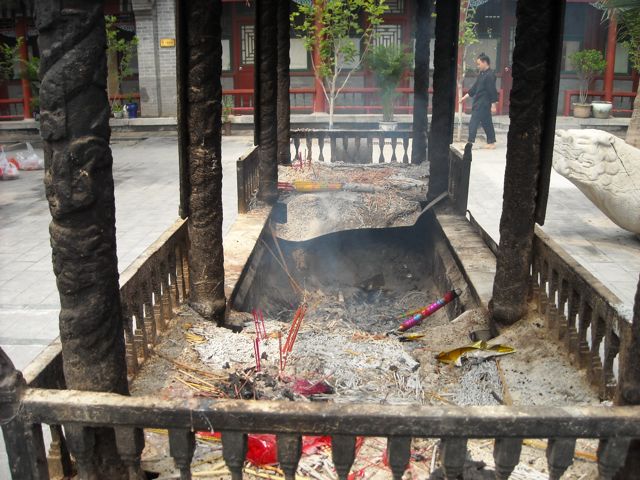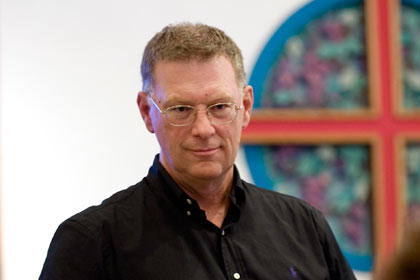
One of the near-universal functions of religion is to solicit help from the Higher Power to meet our needs. The main function of prayer, it seems, is petition—asking, begging, making promises and cutting deals, in order (we hope) to get stuff. I saw this dynamic alive and well at the White Cloud Taoist Temple I visited in a slightly scruffier part of Beijing. People kept arriving with gifts of fruit and flowers for the various deities (idols), and lighting incense sticks before kneeling before the images to ask for favors. It got me wondering how the prayers that Christians tend to ask are really much different.
The White Cloud Temple, founded in 739 AD, is Beijing’s largest and most significant shrine for the Taoist religion. It is rooted in the religious genius of Lao Tzu, the “Grand Old Master” who flourished about 600 BC, in roughly the same era as Confucius. But over time the somewhat philosophical and conceptual ideas of Lao Tzu were blended with the animist inclinations of even earlier Chinese folk religion, so that today Taoism is largely the institutionalized and formalized expression of folk religion, with its preoccupation with the power of gods, ghosts and ancestral spirits.
The expansive grounds of the White Cloud Temple are actually quite beautiful and serene, providing many opportunities for contemplative reflection on nature. But the property is a warren of different “deity halls” or mini-shrines inhabited by various deities. One houses deities with reputations for enhancing fertility and helping couples with marriage problems. Another is useful if your concern is to do well on examinations. A trio of idols in another hall of deities specializes in solving illness and medicinal problems–and so on and so forth. Visitors fan out over the grounds to find the god that matches their pressing concern at the moment. It was precisely this sort of religion that Chairman Mao and the Communists labeled superstition, and tried for decades to eradicate from Chinese life.
Most Christians have no problem with “Help me, please!” prayers. Their only objection to Taoist prayer practices is that such prayers are misdirected. They should not be made toward an idol that cannot help them, but rather toward the one true God, in the name of Christ and in the power of the Spirit. Their assessment of the Taoist prayers I observed could be summed up as: “Good prayers, wrong destination.”
Fair enough. But I wonder if this captures the distinction between typical Taoist prayers and the kind of prayers taught by Jesus. We have in the Bible a form of prayer Jesus taught his followers, and recommended to them as a model for their own. We call it the Lord’s Prayer, and one of the curious things about it is that it is not designed for asking favors of God. It is not chiefly concerned with requests for things we need. It begins, and remains focused, on the accomplishment of God’s good purposes for history—“Your kingdom come, your will be done on earth as it is in heaven.” The kind of prayer Jesus recommended gets us up above our petty concerns and into the larger, higher realm of the “not merely me.” It transcends our narcissist disposition and helps us join a cause bigger than the satisfaction of our personal interests. It’s hard to pray the Jesus way and not get up off your knees determined to do something about the mess the world is in. This, I think, was what Dietrich Bonhoeffer was driving at when he called for a new era of “religionless” (that is, begging for stuff) Christianity.
Most Christian prayers are essentially the same as Taoist prayers. If the pattern of prayer that Jesus recommended had been followed by more Christians in the 20th century Chairman Mao might not have been so turned off, and the world might be a better place today.

Comments are closed.